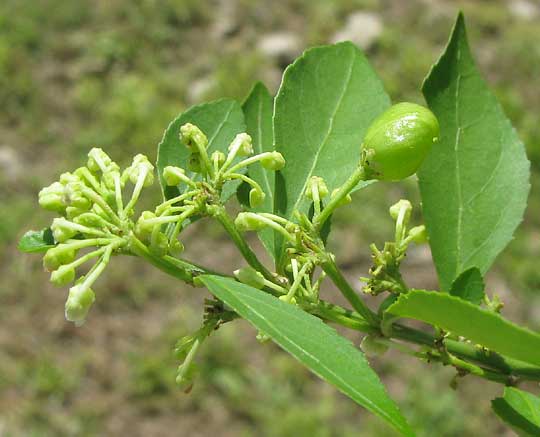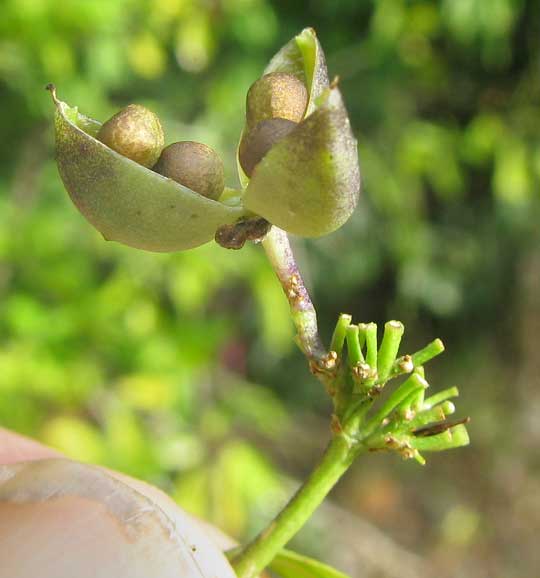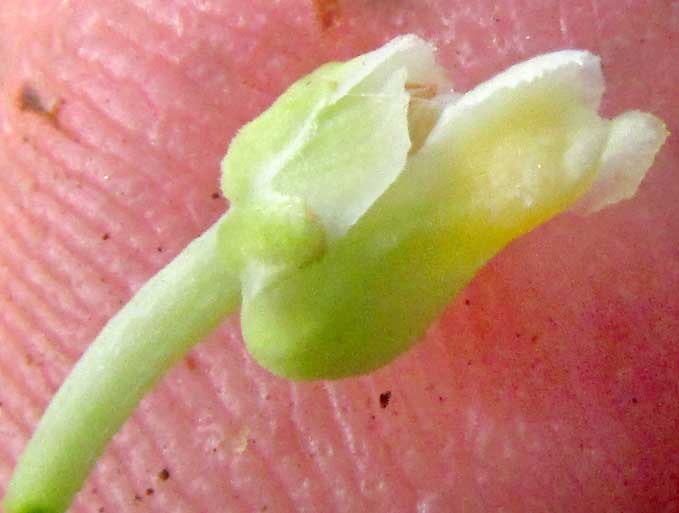Excerpts from Jim Conrad's
Naturalist Newsletter
from the January 17, 2010 Newsletter issued from Hacienda Chichen Resort beside Chichén Itzá Ruins, central Yucatán, MÉXICO; limestone bedrock, elevation ~39m (~128ft), ~N20.676°, ~W88.569°
A WOODY VIOLET
When I first arrived here early in November one of the most conspicuously flowering bushes was the one shown below:

It was conspicuous not because it was in any way showy, but rather because it was so abundant, and its small, nondescript, white flowers occurred at shoulder level, so you couldn't miss them as you hiked forest trails. The flowers, in fact, were so tiny that even with my handlens I couldn't make anything of them. I decided to wait for fruits for identification.
After about a month, fruits did start forming. In the above photo, an immature one is developing at the upper right. When I opened such a green fruit it consisted mostly of air -- it was bladderlike. But still I couldn't figure out what it was.
Finally this week the mystery shrubs are covered with matured fruits, and the very first fruit I saw reminded me of similar fruits seen up north, not on woody shrubs but rather down among the leaves of herbaceous little violets! You can see a mataure fruit, a capsule, open and holding two seeds in each scooplike "valve," with my thumbnail below for scale, below:

This woody shrub is indeed a member of the Violet Family, the Violaceae, though obviously not the violet genus, Viola. It's the HYBANTHUS YUCATANENSIS
Just looking at the flowers, a northern wildflower lover would never guess that this is a member of the Violet Family. Most notably, the flowers are not strongly bilaterally symmetrical like the violets' dog-faced ones, and the plants are definitely woody. It turns out that the Violet Family embraces about 15 genera, and some of those genera are not only woody shrubs but even good-size trees.
However, when you see such a capsular fruit opened into three scooplike valves, each valve holding a few spherical seeds, the relationship with northern violets becomes clear. Most of our plant's fruits lose their seeds soon after they open, so I'm guessing that birds just love those pea-like seeds.
issued on May 14, 2020 from the forest just west of Tepakán; elev. ~9m (~30 ft), N21.053°, W89.052°; north-central Yucatán state, MÉXICO
A FLOWER CLOSE UP
Now with a better camera, I can show a flower on the tip of my finger, below:

Also now I know that the species occurs only in the Yucatan Peninsula south to northern Guatemala. Sometimes it reaches 2.5m high (8ft).